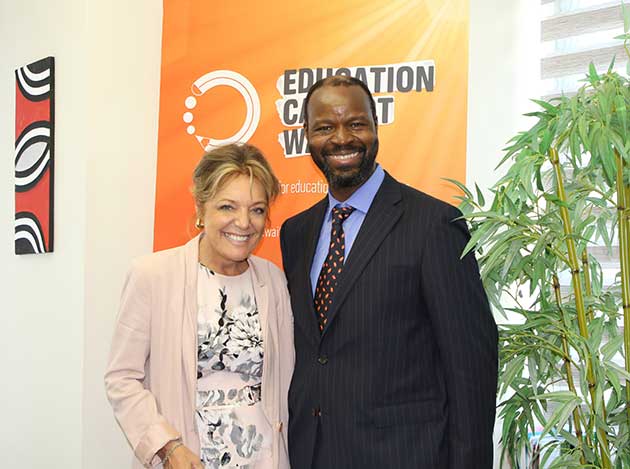MONTEVIDEO, Uruguay, Feb 16 (IPS) – In late January, the UN High Commissioner for Human Rights, Volker Türk, finished an official visit to Venezuela. He said he’d found a fragmented society in great need of bridging its divides and encouraged the government to take the lead in listening to civil society concerns and responding to victims of rights violations.
But Venezuelan civil society had hoped for more. Two days before his arrival, the National Assembly, Venezuela’s congress, had approved the first reading of a law aimed at further restricting and criminalising civil society work. International civil society urged the High Commissioner to call for the bill to be shelved. Many found the UN’s response disappointing.
Another turn of the screw
The bill imposes further restrictions on civil society organisations (CSOs). If it becomes law, CSOs will have to hand over lists of members, staff, assets and donors. They’ll be obliged to provide detailed data about their activities, funding sources and use of financial resources – the kind of information that has already been used to persecute and criminalise CSOs and activists. Similar legislation has been used in Nicaragua to shut down hundreds of CSOs and arrest opposition leaders, journalists and human rights defenders.
The law will ban CSOs from conducting ‘political activities’, an expression that lacks clear definition. It could easily be interpreted as prohibiting human rights work and scrutiny of the government. There’s every chance the law will be used against human rights organisations that cooperate with international human rights mechanisms. This would endanger civil society’s efforts to document the human rights situation, which produces vital inputs for the UN’s human rights system and the International Criminal Court, which has an ongoing case against Venezuela.
The law-making process has been shrouded in secrecy: the draft bill wasn’t made publicly available and wasn’t discussed at the National Assembly before being approved. The initiative was immediately denounced as a tool to control, restrict and potentially shut down CSOs and criminally prosecute their leaders and staff. If implemented, it could mean the end of civil society as we know it in Venezuela.
The UN and Venezuela
The previous High Commissioner, Michelle Bachelet, visited Venezuela in September 2019. She was criticised for taking a cautious approach. Moreover, most of the commitments in the agreement the government signed with her were never fulfilled.
Following that visit, the UN Human Rights Council established the Independent International Fact-Finding Mission on the Bolivarian Republic of Venezuela (FFMV), tasked with investigating alleged human rights violations. In September 2022, the FFMV issued a report detailing the involvement of Venezuela’s intelligence agencies in repressing dissent, including by committing human rights violations such as torture and sexual violence.
But intimidation only grew as Türk’s visit approached, with some protest leaders put under surveillance, followed and detained.
Venezuelan CSOs called for a more energetic approach, but Türk followed his predecessor’s footsteps. His visit was characterised by secrecy and brevity, particularly in terms of the time dedicated to engaging with civil society.
Bachelet’s agreement with the government had included the presence of a two-person UN team to monitor the human rights situation and provide assistance and advice. This has now been extended for two years, but the details haven’t been made public.
Civil society activists have continued to work closely with the UN field office and wouldn’t want to risk its presence in the country, so to some extent they understand Türk’s caution in dealing with the Venezuelan government. But they also view his visit as a missed opportunity.
Türk’s statement to the media at the end of his visit was very much focused on the political and economic crises and healing divisions in society, with human rights ‘challenges’ occupying third place on his list of major concerns.
Alerta Venezuela, a Colombia-based human rights group, recognised the references Türk made to ‘new issues’ – such as the need for Venezuela to sign the Escazú Agreement on environmental rights and decriminalise abortion – alongside ongoing human rights violations such as extrajudicial executions, arbitrary arrests and torture. But it criticised crucial omissions and the UN’s apparent willingness to take government data at face value.
On the anti-NGO bill, the High Commissioner said he’d asked the government to take into account his comments but didn’t provide any information about their content, so it isn’t clear whether he advocated for amendments to a law that can only remain deeply flawed or for it to be shelved – which is what civil society wanted him to do.
The Venezuelan government has all along paid only lip service to cooperation with the UN and hasn’t kept its promises. Repression is only going to intensify in the run-up to the presidential election scheduled for 2024. Any strategy that involves trusting the government and hoping it will change its position seems doomed to failure.
High-level human rights advocacy needed
More energetic criticism came from the independent and less politically constrained FFMV, which expressed ‘deep concerns’ about the potential implications of the draft NGO law for civic and democratic space.
That is the stance civil society would like the High Commissioner for Human Rights to have taken. They want the office holder to be a human rights champion standing independent of states and unafraid of causing a stir.
Türk is only five months into his four-year term. Civil society will keep doing its best to engage, in the hope that the UN High Commissioner for Human Rights can become the human rights advocate the world – and Venezuela – need.
Inés M. Pousadela is CIVICUS Senior Research Specialist, co-director and writer for CIVICUS Lens and co-author of the State of Civil Society Report.
Follow @IPSNewsUNBureau
Follow IPS News UN Bureau on Instagram
© Inter Press Service (2023) — All Rights ReservedOriginal source: Inter Press Service
Check out our Latest News and Follow us at Facebook
Original Source
